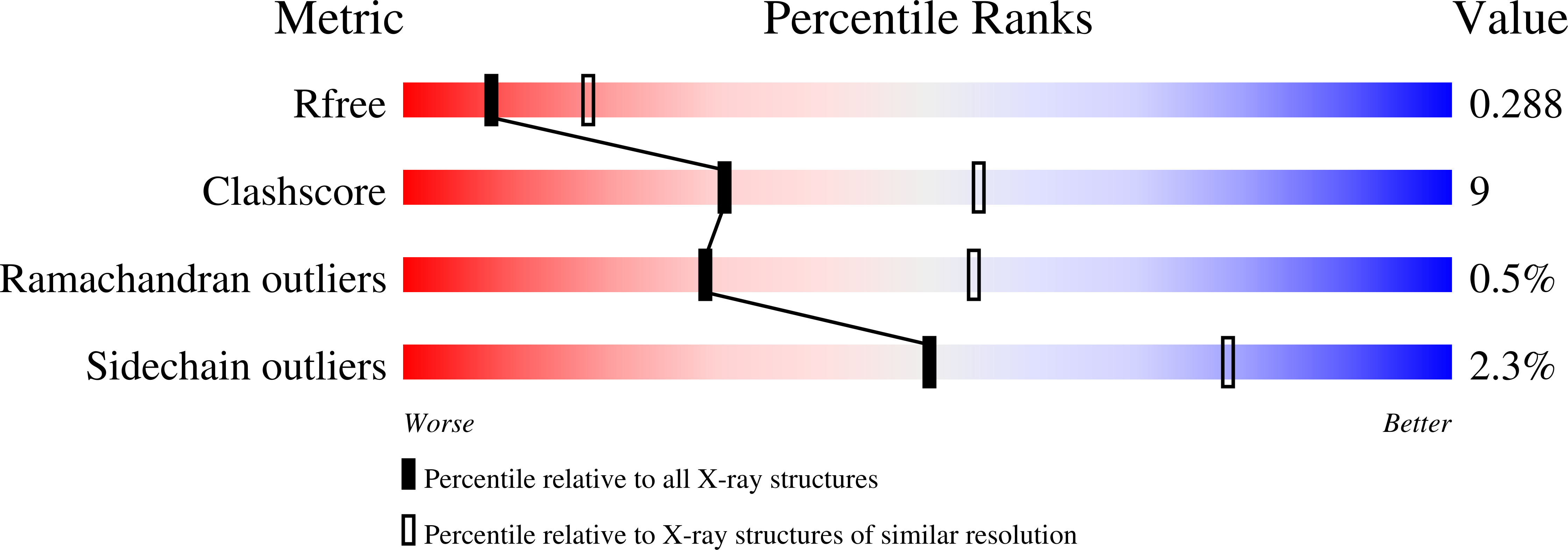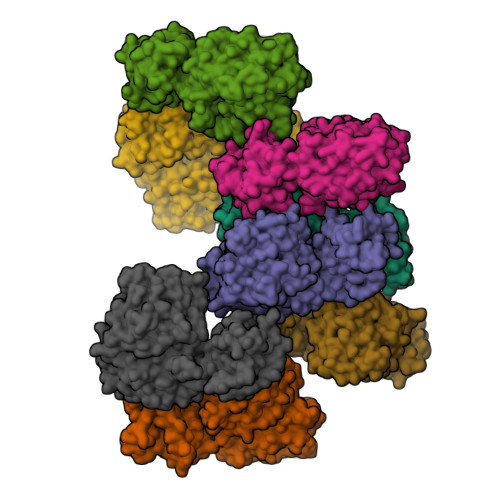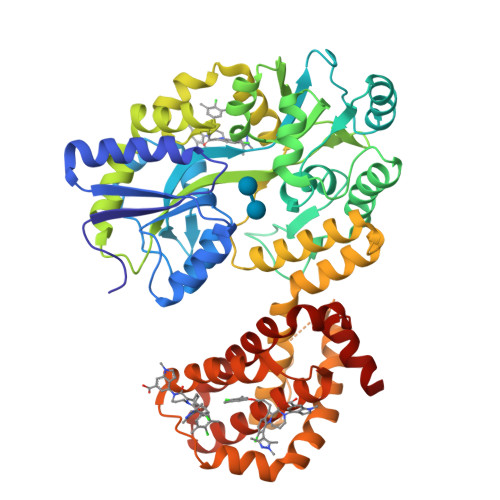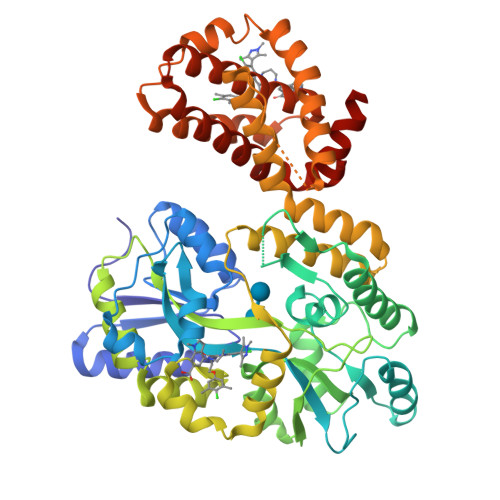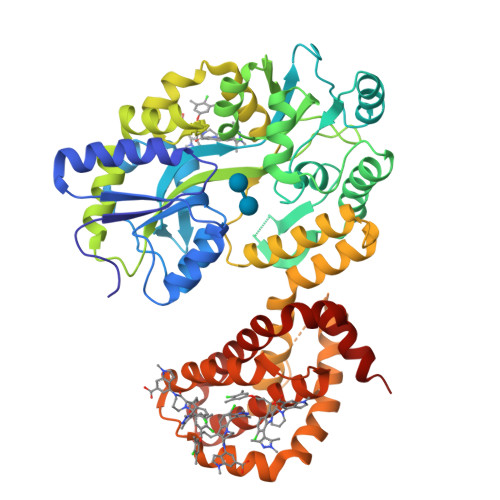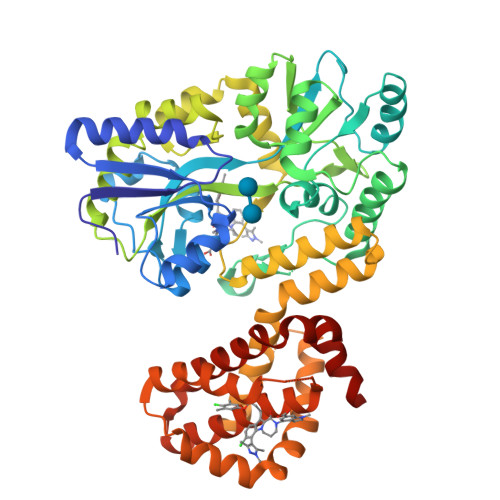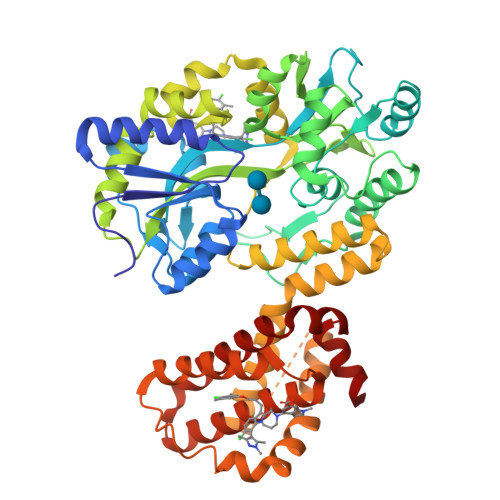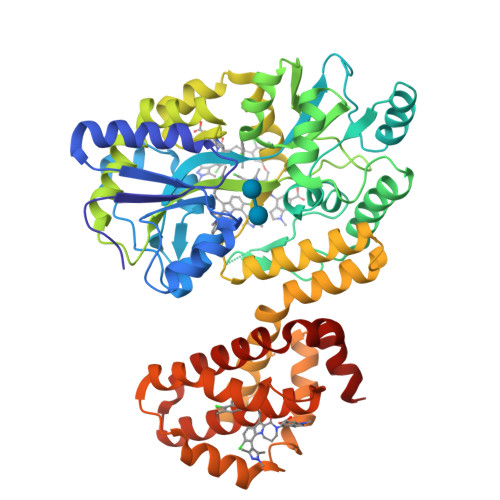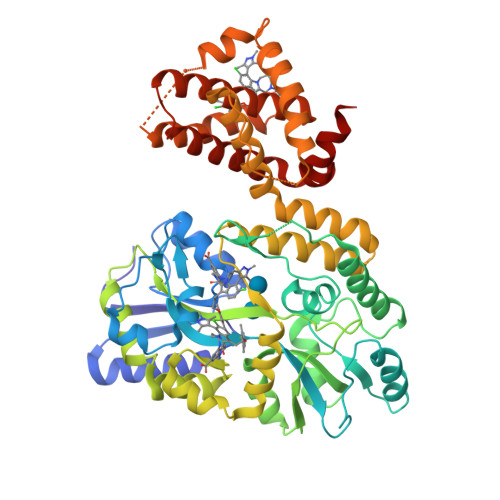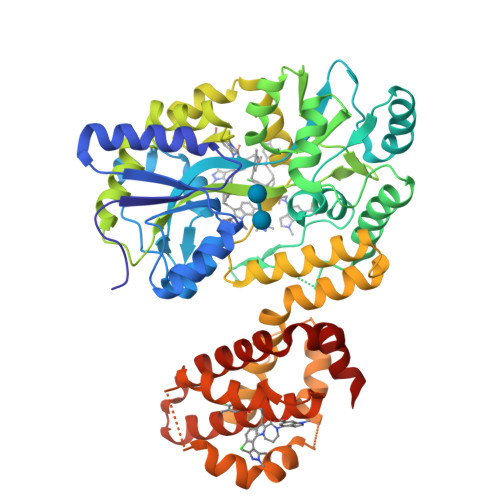Understanding the Species Selectivity of Myeloid Cell Leukemia-1 (Mcl-1) Inhibitors.
Zhao, B., Arnold, A.L., Coronel, M.A., Lee, J.H., Lee, T., Olejniczak, E.T., Fesik, S.W.(2018) Biochemistry 57: 4952-4958
- PubMed: 30011190
- DOI: https://doi.org/10.1021/acs.biochem.8b00626
- Primary Citation of Related Structures:
6DM8 - PubMed Abstract:
To test for on target toxicity of a new chemical entity, it is important to have comparable binding affinities of the compound in the target proteins from humans and the test species. To evaluate our myeloid cell leukemia-1 (Mcl-1) inhibitors, we tested them against rodent Mcl-1 and found a significant loss of binding affinity when compared to that seen with human Mcl-1. To understand the affinity loss, we used sequence alignments and structures of human Mcl-1/inhibitor complexes to identify the important differences in the amino acid sequences. One difference is human L246 (F226 in rat, F227 in mouse) in the ligand binding pocket. Mutating rat F226 to a Leu restores affinity, but the mouse F227L mutant still has a ligand affinity that is lower than that of human Mcl-1. Another mutation of mouse F267, located ∼12 Å from the ligand pocket, to the human/rat cysteine, F267C, improved the affinity and combined with F227L resulted in a mutant mouse protein with a binding affinity similar to that of human Mcl-1. To help understand the structural components of the affinity loss, we obtained an X-ray structure of a mouse Mcl-1/inhibitor complex and identified how the residue changes reduced compound complementarity. Finally, we tested Mcl-1 of other preclinical animal models (canine, monkey, rabbit, and ferret) that are identical to humans in terms of these two residues and found that their Mcl-1 bound our compounds with affinities comparable to that of human Mcl-1. These results have implications for understanding ligand selectivity for similar proteins and for the interpretation of preclinical toxicology studies with Mcl-1 inhibitors.
Organizational Affiliation:
Department of Biochemistry , Vanderbilt University School of Medicine , 2215 Garland Avenue, 607 Light Hall , Nashville , Tennessee 37232-0146 , United States.







